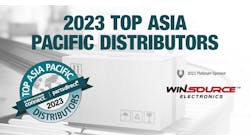At many large OEMs, purchasers have a strategic role in the design of new products and work on design teams to help make decisions about which suppliers should be used in a new product.
While design engineers focus on the specs of a part and a supplier’s technical competence, purchasers involved in design provide input about the manufacturing capabilities of the supplier, whether the supplier can produce a part in the volumes the OEM needs, and whether the component manufacturer can build the part at the highest quality level and lowest cost.
In some cases, buyers involved in design suggest suppliers that may have developed a new technology that could be used in an OEM’s latest product. Purchasers often have a bird’s eye view of the supply base, including the technology that is being developed and which suppliers are ahead of the curve in the technology.
At some companies, buyers work with new product development teams to help determine which design work should be outsourced and which suppliers are best suited to handle it. In some cases, design engineers may need outside help. Buyers often will locate a third-party design firm that has the right skills for the project.
Involving buyers in design can also help OEMs reduce risk. For instance, an informed buyer should know if the supplier being considered for new design is struggling financially, or is having trouble complying with environmental or social responsibility regulations. In some cases, a supplier being considered for design may have a compelling product based on innovative technology, but may not have a global presence that the OEM needs.
Having purchasers involved in design activity can also help an OEM mitigate component obsolescence risk. Lifecycles for semiconductors and other electronic components are shrinking. For instance, researcher IHS says that semiconductor lifecycles range just four to six years.
Buyers need to assess the end of life (EOL) risk of semiconductors and other parts being considered for a new design. In a worst-case scenario, a part that goes EOL can force the shutdown of a production line, costing an OEM thousands, if not millions, of dollars.
More often, an EOL part forces buyers to look for components on the open market, increasing the risk that a counterfeit or substandard part is purchased. Such parts need to be carefully tested and screened, which can be costly. If a counterfeit part is not detected, it could potentially cause a system failure in the field, tarnishing an OEM’s brand.
Buyers who work for OEMs that build systems that have especially long lifecycles have to be most concerned about component obsolescence and must be proactive in identifying which parts are most likely to go obsolete. Such systems include defense and aerospace, industrial equipment, and some medical communications equipment. Some of those systems continue to be built or are in the field for 20 or more years and often outlast many of the components that are used in the systems.
Some parts have longer life cycles than others and should be considered for systems that are expected to be built for a long time. In some cases, EOL components can be replaced by other parts that have similar specs. If the part is a commodity component, there will be multiple suppliers, so if one supplier decides to stop making a part, there are often other sources for the components.
Purchasers involved with design need to communicate with suppliers about the component manufacturers’ production plans for the part. Semiconductor and other component suppliers issue EOL notices for parts, but often the notices are issued less than six months before a part goes end-of-life.
Sometimes buyers get more warning through “not recommended for new design” notices, which are a good indication that a component will soon go EOL.







